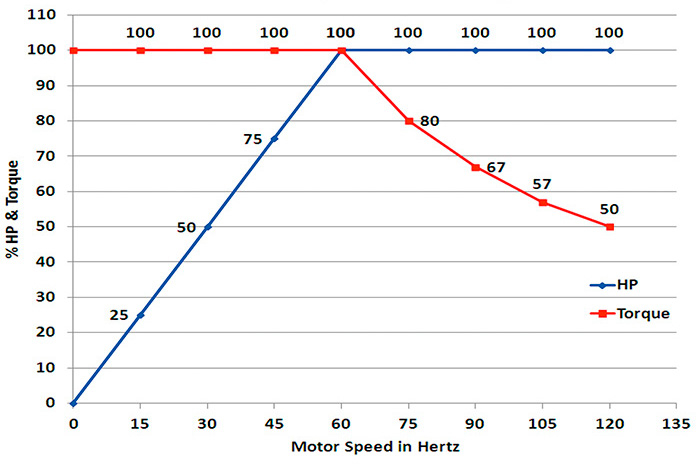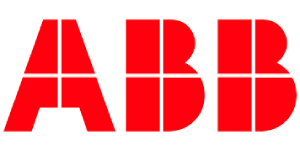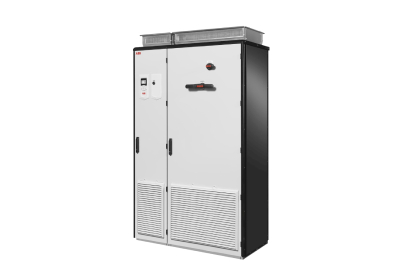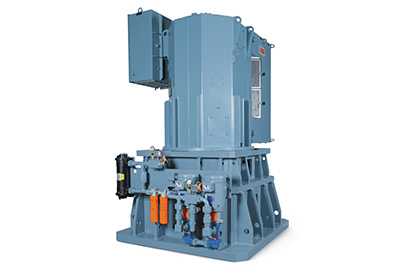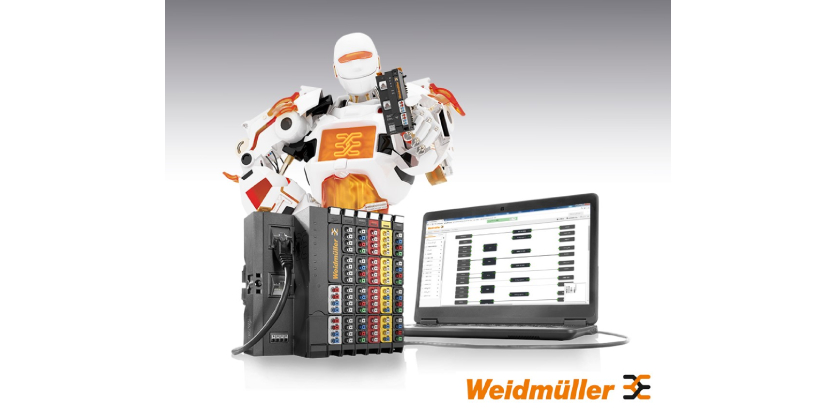Thoughts On Running a Squirrel Cage Motor Above Its Rated Speed With A VFD
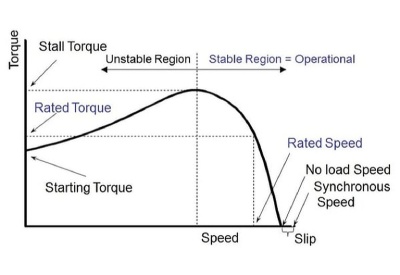
October 26, 2022
Using a VFD To Run a Motor Above Base Speed:
How fast can my Variable Frequency Drive (VFD) run my motor? This is a frequently asked question and the answer requires consideration. There are power and mechanical limits that will come into play with the design and performance of a typical squirrel cage motor.
The VFD, itself, is usually capable of providing the necessary increased frequency. Actually, the VFD is capable of outputting 400Hz – 6.7 times the motors base design frequency.
Now look at some points to consider.
Sizing the VFD for Overspeed
Drives are designed and limited by current – both the motor and drive must be running below their rated currents before considering increasing the speed, and once the increase is applied that they still stay below these limits. So if you are going to overspeed an application, you may require oversizing the drive.
The type of load that is being powered is very important. If it is a fan or centrifugal pump, then the power will increase exponentially – a 2% increase in speed will increase the power consumed by around 6%. However, a constant torque load like an extruder would show a 2% power increase for a 2% speed increase.
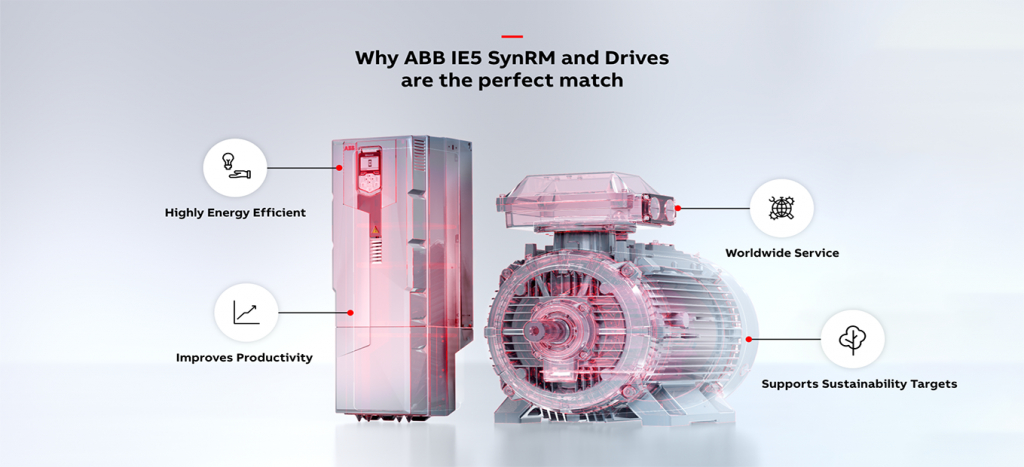
Mechanical Equipment Considerations
Speeding up mechanical systems above designed limits will increase the mechanical stresses. With fans, recommended blade tip speeds may be exceeded or vibration levels may increase too much. A fan or pump will also create more noise with increasing speed. Electric motors and gearboxes all have a maximum design speed which should not be exceeded as well. All systems have resonant frequencies that you could experience as you go go above tested deign characteristics. You will need to be aware of these as they can be damaging to equipment.
Other Considerations
Above its rated speed, an electric motor enters the ‘constant power zone’ which means the available torque reduces with increasing speed. This is because the VFD can apply the higher frequency, but is limited to supplying the line voltage that is powering it. So you have to confirm if the reduced torque at the higher speed will still be sufficient to run the load.
#abb #motor #vfd #technology #automation
